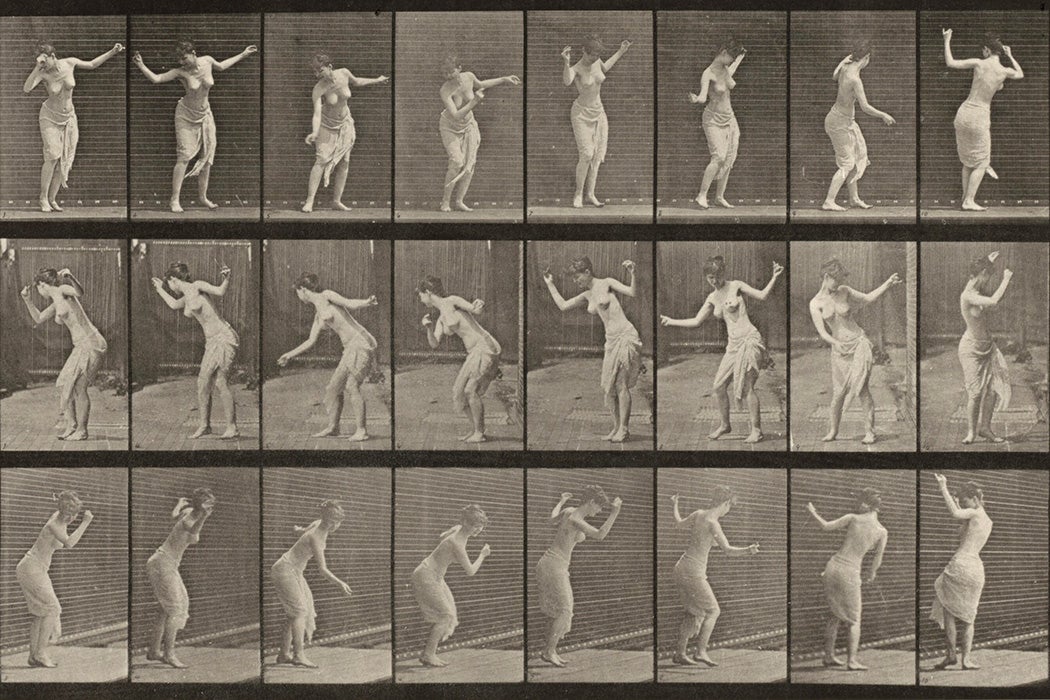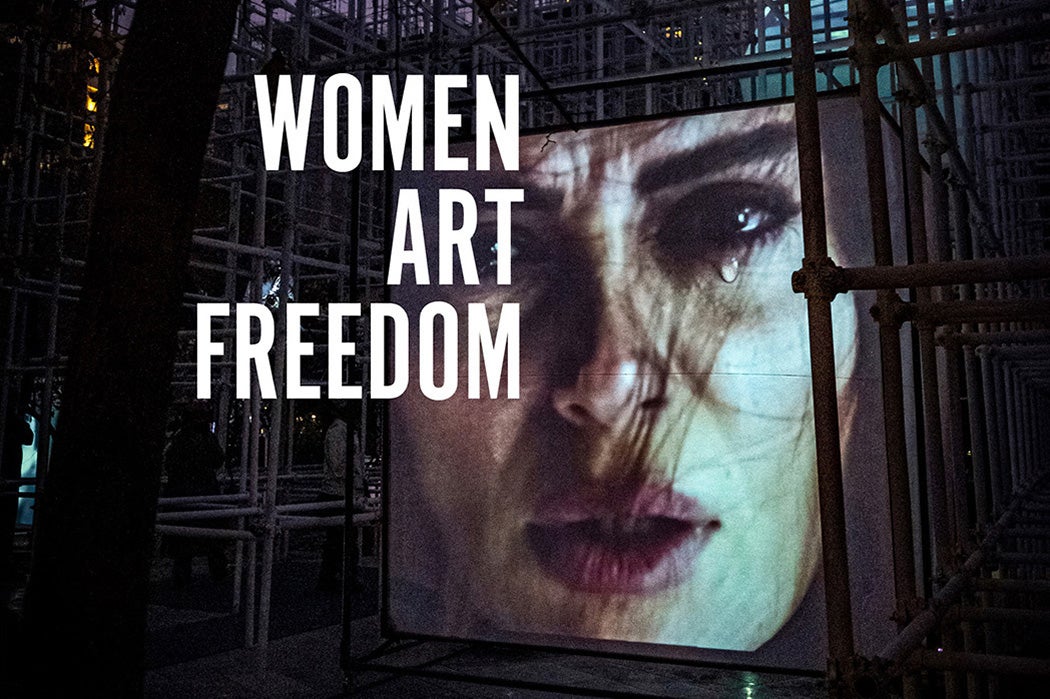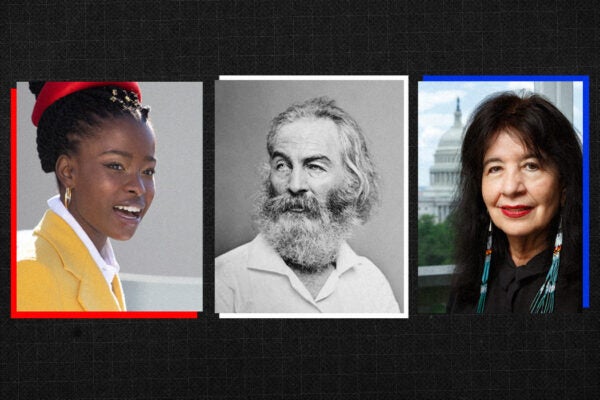Path to Open Books on JSTOR
“What links dance and the scientific disciplines?” This is the question with which Lynn Matluck Brooks opens Dance and Science in the Long Nineteenth Century: The Articulate Body. The answer might seem obvious—the connection is based on the human body—but, as Brooks explains, the answer is much more amorphous. The twenty-one essays that make up this collection, edited by Brooks along with Sariel Golomb and Garth Grimball, explore that link in all of its multiplicity.

The collection’s temporal framing magnifies the topic’s breadth; the modifier “long” extends the boundaries of the nineteenth century, starting toward the end of the previous one and ending with the turn to the twentieth. When it comes to both dance and science, the nineteenth century is ripe for study, Brooks writes,
a time of marked transformation in dance performance, in tandem with forces of colonial expansion, industrialization, and urbanization that profoundly shaped cultures, knowledge systems, and political landscapes worldwide.
Science, too, was immersed in constant change, focused in part on systematization and attempts to understand the body.
Brooks brings a wealth of experience to this collection. The founder of the dance program at Franklin & Marshall College, she led the department for thirty-plus years. Her scholarship focuses on early dance history and documentation and movement analysis. Written by a cast of esteemed dance historians, the essays in Dance and Science in the Long Nineteenth Century are divided into three sections: “Learning How to Look: Regimes of Classification,” “Dancing Ideologies: Nation, Sexuality, Sciencing,” and “Physical Cultures: Disciplining and Improving the Self.” Published in 2025 by the University Press of Florida, the book is among hundreds of titles included in JSTOR’s Path to Open program, which supports university presses in producing open access materials. Chapter One, “Venus in Pieces: Choreographing the Anatomical Body with Clemente Susini’s Venus de’ Medici,” is freely available now.
Chava Pearl Lansky: Your research and writing span an array of topics within dance and dance history, but science hasn’t been a major focus of yours until now. What made you want to edit a collection on the intersection between the two?
Lynn Matluck Brooks: I did touch on science in earlier works, but you’re right, it was not a focus. The Art of Dancing in Seventeenth-Century Spain, my translation of and commentary on Juan De Esquivel Navarro’s treatise, has a chapter on the science of the period. It explores what he meant when he claimed that his approach was scientific.
A more peripheral connection was the biography I did of John Durang. His father, Jacob, was a barber surgeon, and there’s a wonderful story about one of Durang’s first performances as a teenager. He pierced his leg on a spike onstage, and his father healed him. He came back fully functioning and was claimed to be the greatest dancer in America after that. What did Jacob do that healed his son in the late eighteenth century, when hand washing wasn’t even part of the medical vocabulary?
Those were two early encounters I had with the interplay of dance and science. But what really turned my attention in this direction was work I was doing on a book that’s forthcoming this summer on dance in antebellum Philadelphia. I was trying to figure out how audiences at the time were understanding the bodies they were seeing onstage, which were mostly white people in blackface. I began investigating the kinds of discourses about the body available at the time and realized there was a lot going on in sciences that were focusing powerfully on the bodies of people who were struggling for recognition and rights. It opened up this whole world of understanding about bodies and dance. It was a huge eye opener.
What kinds of sources did you use to better understand the sciences of that period?
A lot came from research for this forthcoming book, which goes from 1820–1860. Lo and behold, University of Pennsylvania was a major educator of this whole school of ethnologists and medical classifiers. They were engaged with taxonomies, with classifications of all kinds of life, but particularly focused on human beings and ranking human capacities. Two of the key figures I focused on were Samuel George Morton, who was a founder of what was later known as race science and was a collector of skulls, and one of his followers, Josiah Clark Nott. Nott was a surgeon with the Confederacy during the Civil War, and he wrote a huge book called Types of Mankind.
I also studied phrenologists, craniologists, and medical doctors. Another piece of the story is that Philadelphia had the first dedicated training school for female physicians. Female Medical College, which opened in 1850, trained women who became important voices in educating women about their own bodies. That was something else that stunned me, because it’s of course the same moment that the ballerina is ascending in import on the stage. Women were coming to the fore in these two distinct realms.
Where did the idea for this collection come from?
Just before COVID, I was at a joint conference of Society of Dance History Scholars and Congress on Research and Dance, and I was talking to a couple of my colleagues about my fascination with dance and science. We decided to do our own conference at Swarthmore College and put out a call for papers. We were all members of the “Dancing and the Long Nineteenth Century Working Group” of those organizations. Then COVID hit, and we decided to do the conference online. One of the people listening on Zoom was Mindy Aloff, who was working with University Press of Florida. She was the one who said she’d love to see this material turned into a book.
You mentioned that you were already part of a nineteenth century working group, and your new book on antebellum Philadelphia also covers that era. What excites you about the nineteenth century? What makes it a rich period in terms of both dance and science?
I got into the nineteenth century after finishing my biography of John Durang. He died in 1822. I learned while writing that book that during his time, ballet was already percolating in the United States. I had learned in my dance history classes that we needed Michel Fokine and George Balanchine to bring ballet to America. But that wasn’t true. I started looking at primary sources and kept coming across ballet next to blackface minstrelsy. I realized that was the story. They exploded at the same time. Why?
That’s what turned my attention to the nineteenth century as this very tumultuous period of emergence in the arts, sciences, in education, politically, culturally. This drive of people in the US to make their mark on the world. I began trying to grapple with this very complex period, and I found it endlessly fascinating.
Each essay in this collection understands science differently—some are analyzing very tangible discoveries, like the x-ray or stethoscope, and others explore pseudosciences like phrenology and animal magnetism. How did you and your co-editors define science for the purposes of this book?
One of the things we hoped would happen is that authors who submitted material would offer their own take on “what was science.” Because part of the tumult of this early period in the nineteenth century was the fact that there wasn’t even a word for scientists. They were “men of science,” or “natural philosophers.” It was still a very amorphous category. It was in the 1830s that William Whewell actually proposed the term “scientist.” During that time, a lot of clergymen were engaged in natural philosophy, collecting minerals, fossils, and shells, and categorizing and comparing. People had their own little cabinets of natural curiosities in their houses. Museums were emerging, which had both art and science material in them. It was a very fluid understanding of science. We wanted authors to bring their visions of science so that we could have a very broad view.
Something in this period in the United States and Europe that came increasingly to the fore was the issue of systematization: putting information into classifications, and various kinds of taxonomies. You can see, for example, in medicine, that doctors were beginning to specialize; anatomy, physiology, “diseases and complaints of women,” pulmonary. Geology and chemistry became separate subjects. It wasn’t all just one ball of wax. The systematic methodology for doing science was far from finalized, but it was underway.
You can see this also in dance in the period, particularly in ballet. You see the emergence of techniques, classification, pedagogy, rules, and principles. It’s clear in the dancing manuals of the time. They’d say, “My teaching is based on principles,” or “my teaching is based on laws of anatomy and aesthetics.” This was critical to the respectability of the field. I bring this out in the intro to the book, but for me the issue of systematization became an important guide to what was science. But I think it’s also important to challenge that with other views.
The essays in this collection all feature responses from other scholars, putting different voices in conversation with each other. What was behind that decision?
When we were doing the conference, we invited a moderator to summarize her takes each day, and it was really rich. It was a small group, and there was a lot of give and take. We wanted to bring the same sense of exchange to the volume. I think it’s a wonderful set of essays, and I love the directions that these commentators brought to their responses. They surprised me in almost every single case, seeing each of these as opportunities to expand and develop and rethink our perspectives on this particular set of questions. There’s no doubt that there’s room for another book, or many other books, on the question of dance and science in this period and beyond.
Many of the essays provide new lenses through which to see well-known dances. I’m thinking particularly of Nutcracker’s “The Waltz of the Flowers,” Alexander H. Schwan’s understanding of phytology, or Janice Ross’s piece on Giselle as seen through the invention of the stethoscope. Has working on this collection changed the way that you see dance, both historically and in the present?
In a very overarching sense, it confirmed for me the fact that all dance has to be contextualized. Ballet really never was escapism, as I learned in my dance history classes. Theatrical material is always grappling with its time. The works that were being presented onstage, both blackface and ballet, were addressing themes that interpenetrated everyday life. All the bizarre exotica in ballet came from the age of colonization. All the crazy stories that come up in travelers’ manuals and the journeys of exploration are very dramatizable. You see them being drawn onto the stage. It’s not just what I see from my perspective as a twenty-first-century-informed dance viewer and historian. I really have to go back and think what was important to them, what was the information that they were bringing to these stages. So, these historical works, in some ways, I think were much more potent in their day than they would be to us now. Because they rose from issues that were candescent in that period.
Do you think that the way ballet companies present these classics today is losing some of that? Are we missing out on that context?
I think that we are. I’ve seen a lot of attempts to, for example, present La Bayadère without what we regard as its offensive elements. But that’s exactly what it was about. It was a tension between those frightening, different kinds of figures and the good, the acceptable, the pure. That was very much a part of the discourse in this period. That’s what made those works interesting then and I think could sustain some of their interest now, except that we don’t feel that we can present them that way. I think ballet repertory is really kind of in crisis.
Were there any discoveries presented in this collection that particularly surprised or delighted you?
This is like asking a mother to choose her favorite child. But I’ll tell you some of the essays that turned lights on in my mind. I loved Stephen Ha’s essay on Ondine and on understandings of water in the period, having thought it was empty and discovering it was full of sprites and monsters, as they saw it, and how that view shaped stage representations.
More to Explore
Iran: Creativity in the Aftermath of Uprising
I was very moved by Pallabi Chakravorty’s essay on the dances of India and the ways that the bodies of temple dancers were being understood and how Indian classical dance was systematized and purified. She explains how Indian intellectuals were caught between trying to sustain their own cultural legacy and trying to justify it in light of dominant Western science.
Also, Sariel Golomb’s essay on the Venus de Medici, this anatomical model, this choreographed investigation of seeing and handling and exploring its history, which I thought was so beautiful. And the fact that the sculpture had a string of pearls around her neck, which made me think of Marie Taglioni and her string of pearls.
Reading the collection, I was struck by the ongoing relationship between dance technique and advances in technology and medicine, and what that means in terms of dance becoming more and more virtuosic. As science and technology continue zooming along, do you see a stopping point in that relationship? Is there a limit to how far dance technique can go?
Ever since I was young and training as a dancer, what I’ve seen happening in dance technique is mind boggling. When I was a young girl, one of the dancers whom I most admired was Margot Fonteyn. She had many phenomenal qualities, but her second position extensions and arabesques are modest compared to anything your typical corps de ballet dancers can do now in any professional company.
With all the trainers and physical therapists and Kinesiology knowledge that we have, I think we can still push it a little bit further. But there’s going to come an endpoint to what the body alone can do. But the body is not alone anymore. It’s part of technology. And there’s no doubt that digital forms, artificial intelligence, dance on screen, are all taking bodies in new directions.
Many major dance organizations and performance venues are focusing their efforts on exactly that intersection of dance and technology. Now that you’re steeped in the history of this relationship, what do you see as its future?
All of the technologies and views that are represented in this book were steps on the way. Now, these are just steps on the way to some other destination, which is not going to be final either. For me, the most frightening question is, are we going to lose our sense of the value of corporeality? My hope is not. My hope is that this draw toward the world of screens and digital and artificial intelligence is going to highlight our need for a greater sensitivity toward embodiment. All of us in the dance world are trying to figure this one out with, in some cases, very, very cautious optimism.






